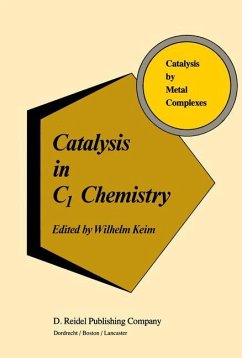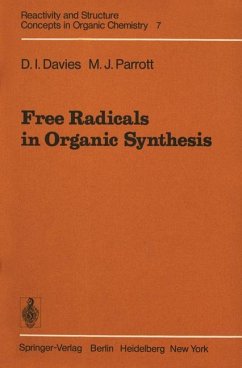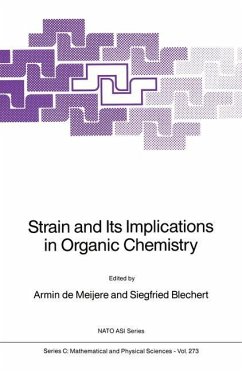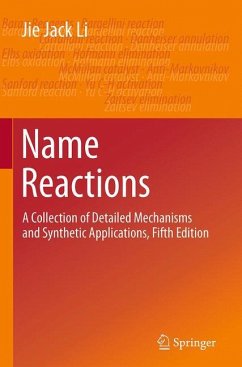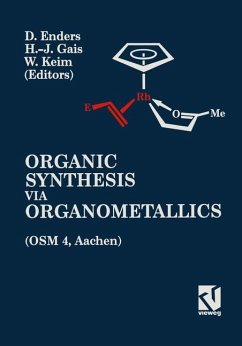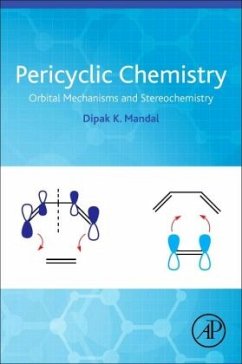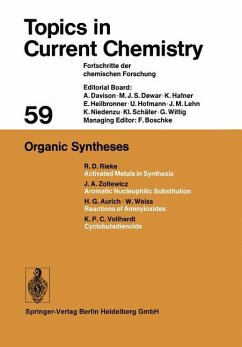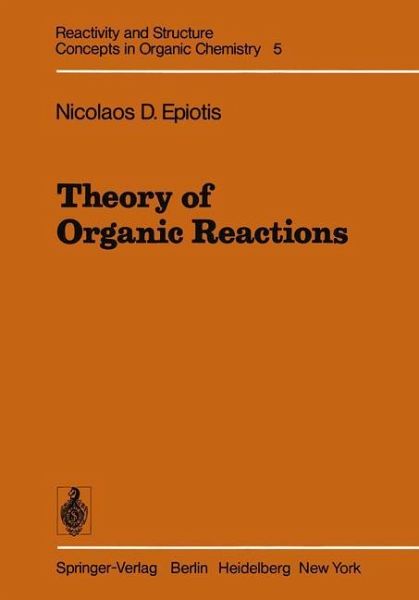
Theory of Organic Reactions

PAYBACK Punkte
39 °P sammeln!
1. One-Determinental Theory of Chemical Reactivity.- 1.1 General Principles and Computational Schemes.- 1.2 Qualitative One-Determinental Models of Chemical Reactivity.- 1.3 The Static One Electron Molecular Orbital Model.- 1.4 Orbital Energies. The Donor-Acceptor Classification of Molecules and the Concept of Reaction Polarity.- 1.5 One Electron Interaction Matrix Elements and Overlap Integrals.- 1.6 The Woodward-Hoffmann Molecular Orbital Correlation Diagram.- 2. Configuration Interaction Overview of Chemical Reactivity.- 2.1 General Principles.- 2.2 Qualitative Configuration Interaction Mod...
1. One-Determinental Theory of Chemical Reactivity.- 1.1 General Principles and Computational Schemes.- 1.2 Qualitative One-Determinental Models of Chemical Reactivity.- 1.3 The Static One Electron Molecular Orbital Model.- 1.4 Orbital Energies. The Donor-Acceptor Classification of Molecules and the Concept of Reaction Polarity.- 1.5 One Electron Interaction Matrix Elements and Overlap Integrals.- 1.6 The Woodward-Hoffmann Molecular Orbital Correlation Diagram.- 2. Configuration Interaction Overview of Chemical Reactivity.- 2.1 General Principles.- 2.2 Qualitative Configuration Interaction Models of Chemical Reactivity.- 2.3 The Static Linear Combination of Fragment Configurations Method.- 2.4 The Static Delocalized Configuration Interaction Method.- 2.5 The Dynamic Delocalized Configuration Interaction Method.- 3. The Dynamic Linear Combination of Fragment Configurations Method.- 3.1 Definitions.- 3.2 General Theoretical Considerations.- 3.3 The Interaction of Diabatic Surfaces.- 3.4 Polarity Control of Barrier Heights and Decay Efficiencies.- 3.5 The Effect of Excitation Energy on Photochemical Barrier Height.- 3.6 Diabatic Surface Interrelationships. A Classification of Chemical Reactions.- 4. Even-Even Intermodular Multicentric Reactions.- 4.1 Potential Energy Surfaces for 2?+2? Cycloadditions.- 4.2 The Effect of Polarity. Potential Energy Surfaces for Nonionic and Ionic In 2?+2? Cycloadditions.- 4.3 Pericyclic, Effectively Pericyclic and Quasipericyclic Reactions.- 4.4 The Effect of Unsymmetrical Substitution and the Effect of Conjugative Substitution.- 4.5 The Regiochemistry of 2?+2? Cycloadditions.- 4.6 Isomeric Reactions and the Topochemistry of 2?+2? Cycloreversions.- 4.7 The Topochemistry of Intramolecular Cycloadditions.- 4.8 The Selectivity-PolarityRelationship.- 4.9 Reaction Intermediates and Types of Organic Mechanisms.- 4.10 2?+2? Nonionic Photocycloadditions Involving n?* Excitation.- 4.11 The Effect of Low Lying Diexcited Diabatic Surfaces in Photoreactions.- 4.12 The Problem of Energy Wastage. The Concept of Dual Channel Photoreactions.- 4.13 Generalizations.- 5. The Problem of Correlation Imposed Barriers.- 6. Reactivity Trends of Thermal Cycloadditions.- 6.1 Introduction.- 6.2 Mechanisms of Stereochemical Nonretention in Cycloadditions.- 6.3 Reactivity Trends of Thermal Nonionic 2?+2? Cycloadditions.- 6.4 Reactivity Trends of Thermal Ionic 2?+2? Cycloadditions.- 6.5 The 2?+2? Ionic Cycloaddition Problem.- 6.6 Reactivity Trends of Thermal Nonionic 4?+2? Cycloadditions.- 6.7 Reactivity Trends of Thermal Ionic 4?+2? Cycloadditions.- 7. Reactivity Trends of Singlet Photochemical Cycloadditions.- 7.1 Introduction.- 7.2 The Chorochemistry of Singlet 2?+2? Photocycloadditions.- 7.3 "Unusual" Head to Head vs. Head to Tail Regioselectivity of Photocycloadditions.- 7.4 n?* State Dual Channel Mechanisms of Polar Nonionic Carbonyl Photocycloadditions.- 7.5 ??* State Dual Channel Mechanisms of Polar Nonionic Photocycloadditions.- 8. Miscellaneous Intermolecular Multicentric Reactions.- 8.1 Cycloadditions of Cumulene Systems.- 8.2 The Ene Reaction.- 8.3 1,3 Dipolar Cycloadditions.- 9. ?? A ddition Reactions.- 9.1 Introduction.- 9.2 Potential Energy Surfaces for 2?+2? Additions.- 9.3 Reactivity Trends of 2?+2? Additions.- 10. Even-Odd Multicentric Intermolecular Reactions.- 10.1 Potential Energy Surfaces for 2?+1? Cycloadditions.- 10.2 Reactivity Trends of Cationic Even-Odd Retro-Cycloadditions and Eliminations.- 11. Potential Energy Surfaces for Odd-Odd Multicentric IntermolecularReactions.- 12. Even-Even Intermolecular Bicentric Reactions.- 12.1 Potential Energy Surfaces for Electrophilic and Nucleophilic Additions.- 12.2 Reactivity Trends of Electrophilic and Nucleophilic Substitutions.- 13. Even-Odd Intermolecular Bicentric Reactions.- 13.1 Potential Energy Surfaces for Radical Additions.- 13.2 Reactivity Trends of Radical Substitution Reactions.- 14. Odd-Odd Intermolecular Bicentric Reactions. Potential Energy Su





